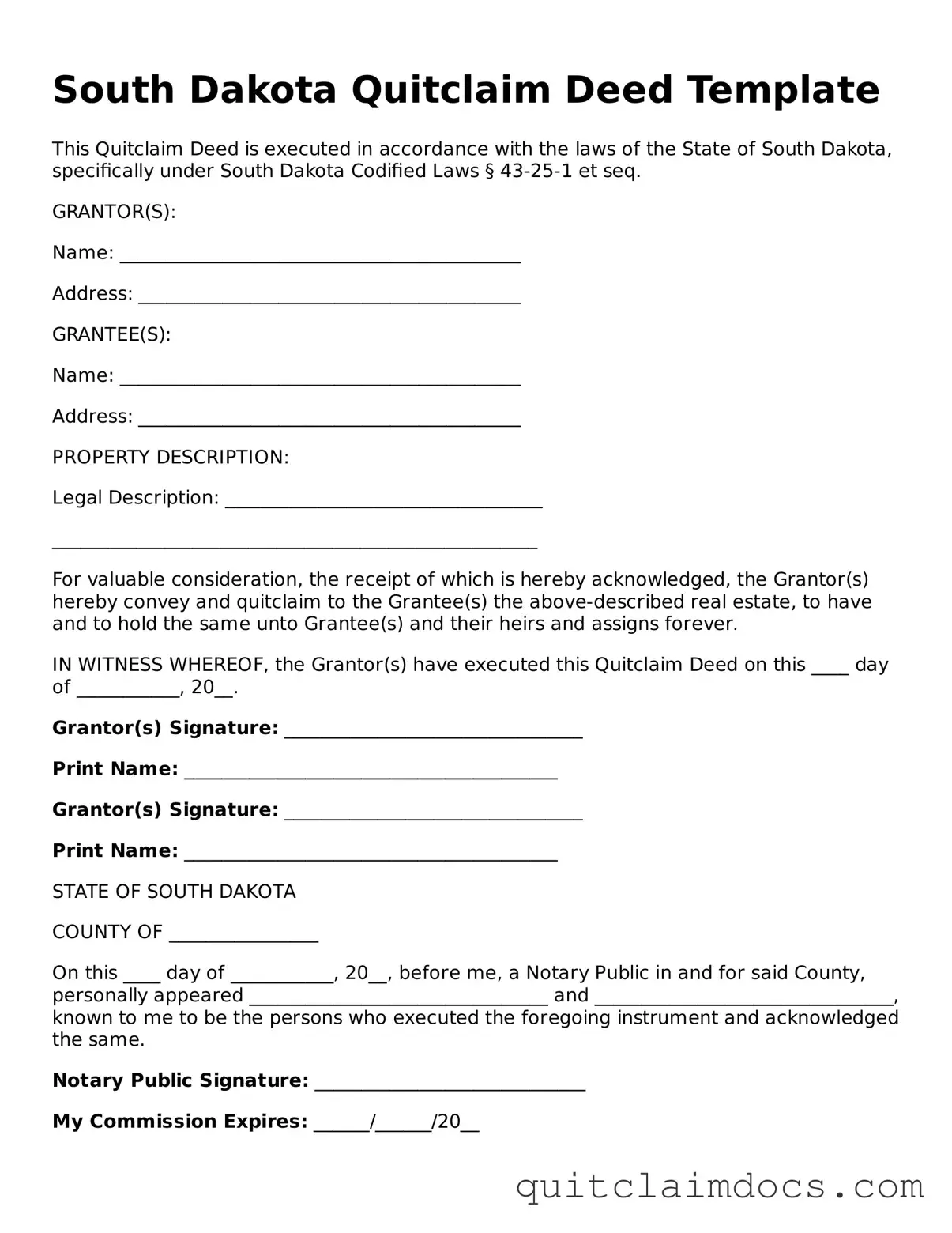South Dakota Quitclaim Deed Template
This Quitclaim Deed is executed in accordance with the laws of the State of South Dakota, specifically under South Dakota Codified Laws § 43-25-1 et seq.
GRANTOR(S):
Name: ___________________________________________
Address: _________________________________________
GRANTEE(S):
Name: ___________________________________________
Address: _________________________________________
PROPERTY DESCRIPTION:
Legal Description: __________________________________
____________________________________________________
For valuable consideration, the receipt of which is hereby acknowledged, the Grantor(s) hereby convey and quitclaim to the Grantee(s) the above-described real estate, to have and to hold the same unto Grantee(s) and their heirs and assigns forever.
IN WITNESS WHEREOF, the Grantor(s) have executed this Quitclaim Deed on this ____ day of ___________, 20__.
Grantor(s) Signature: ________________________________
Print Name: ________________________________________
Grantor(s) Signature: ________________________________
Print Name: ________________________________________
STATE OF SOUTH DAKOTA
COUNTY OF ________________
On this ____ day of ___________, 20__, before me, a Notary Public in and for said County, personally appeared ________________________________ and ________________________________, known to me to be the persons who executed the foregoing instrument and acknowledged the same.
Notary Public Signature: _____________________________
My Commission Expires: ______/______/20__
